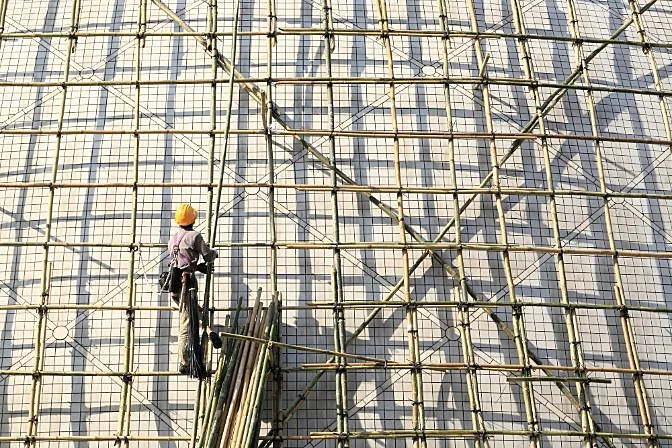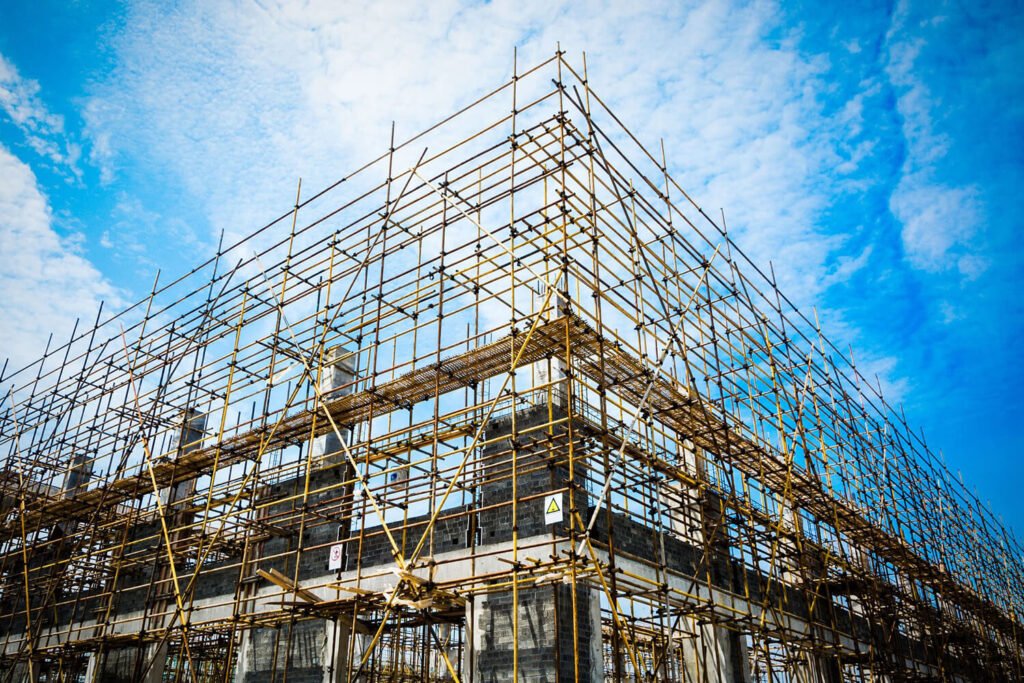A Comprehensive Overview to the Crucial Functions of Scaffolding in Modern Building And Construction
The landscape of modern building significantly counts on effective scaffolding systems that prioritize performance, advancement, and safety. As jobs expand in complexity, recognizing the essential attributes of scaffolding becomes critical for guaranteeing worker safety and security and maximizing task timelines. This guide checks out various kinds of scaffolding, highlights essential safety functions, and checks out material innovations that add to performance and sustainability. The ramifications of these components prolong much beyond simple building methods, motivating a closer look at just how they affect general project success and worker wellness.
Kinds Of Scaffolding
Although scaffolding systems can vary widely in style and application, they typically come under numerous unique classifications that accommodate various building demands - Scaffolding. One of the most common kinds include sustained scaffolding, suspended scaffolding, and rolling scaffolding
Supported scaffolding includes systems sustained by a structure of posts, which give a elevated and secure functioning surface area. This kind is commonly made use of for tasks that require considerable altitude, such as bricklaying or outside paint.
Suspended scaffolding, conversely, is used for tasks requiring accessibility to high elevations, such as cleaning or repairing structure exteriors. This system hangs from one more framework or a rooftop, enabling workers to reduced or raise the platform as needed.
Moving scaffolding features wheels that permit very easy wheelchair across a work site. It is particularly valuable for tasks that require regular moving, such as interior job in big spaces.
Each kind of scaffolding is developed with particular applications in mind, making certain that building and construction jobs can be executed effectively and successfully. Recognizing these classifications is crucial for picking the suitable scaffolding system to satisfy both project needs and website conditions.
Secret Security Attributes
Security is critical in scaffolding systems, as the possible risks associated with functioning at elevations can cause significant mishaps otherwise effectively managed. Key safety attributes are important to guarantee the well-being of employees and the integrity of the building website.
First and primary, guardrails are essential. These obstacles offer a physical safeguard against falls, substantially reducing the risk of severe injuries. Additionally, toe boards are usually made use of to avoid tools and materials from diminishing the scaffold, safeguarding workers listed below.
Another essential part is making use of non-slip surface areas on systems. This function improves hold, especially in adverse weather conditions, consequently lessening the probability of slides and falls. Accessibility ladders should be securely positioned to facilitate risk-free access and departure from the scaffold.
Regular examinations and maintenance of scaffolding systems are likewise crucial. These evaluations guarantee that all parts are in excellent condition and working appropriately, resolving any type of wear or damages without delay.
Last but not least, appropriate training for all workers associated with scaffolding procedures is necessary to ensure that they understand safety and security protocols and can recognize potential hazards. Scaffolding. Collectively, these attributes create a safer working atmosphere and substantially minimize threats connected with scaffolding
Material Developments
Developments in product science have actually considerably influenced the scaffolding market, enhancing both safety and security and performance in modern-day construction. The intro of high-strength steel and light weight aluminum alloys has actually transformed conventional scaffolding systems. These materials are not just lighter, making them simpler to transport and construct, however also offer remarkable load-bearing capabilities. This results in scaffolding frameworks that can sustain higher weights while decreasing the risk of collapse.
Furthermore, ingenious composite materials, such as fiberglass-reinforced plastics, have emerged as sensible options. These materials are resistant to rust and ecological destruction, thus prolonging the life-span of scaffolding systems, particularly in extreme climate conditions. The use of such materials contributes to lower upkeep prices and ensures consistent performance gradually.


Layout Factors To Consider
Taking into consideration the complexities of contemporary building and construction jobs, efficient scaffolding layout is paramount to making sure both performance and safety and security. Style factors to consider need to include various elements, consisting of lots ability, height, and the details demands of the building website. Each job presents unique obstacles, demanding a flexible method to scaffolding systems that can adjust to varying conditions.
Structural integrity is essential; consequently, engineers should determine the lots that the scaffolding will sustain, consisting of workers, products, and devices. The option of products plays a critical role in ensuring the scaffolding can withstand these tons while remaining lightweight and durable. Additionally, the layout has to permit for very easy accessibility and egress, assisting in the smooth motion of products and personnel.
Safety and security functions, such as guardrails and non-slip surfaces, ought to be incorporated to reduce dangers of mishaps. The layout must think about the surrounding setting, including adjacent frameworks and possible threats. By attending to these layout considerations, building and construction companies can improve the efficiency of scaffolding systems and promote a more secure working setting, ultimately adding to the overall success of the task.
Upkeep and Evaluations
The performance of scaffolding systems expands past initial design and implementation; continuous maintenance and regular evaluations are essential to guaranteeing their proceeded efficiency and safety and security throughout the duration of a task. Normal assessments must be carried out by certified workers to identify any kind of indicators of wear, damage, or instability that could compromise the stability of the scaffolding.
Upkeep methods need to include routine checks of structural elements, such as slabs, installations, and structures, ensuring that all elements remain safe and secure and free from rust or various other degeneration. In addition, the performance of safety and security features, such as guardrails and toe boards, should be evaluated to ensure compliance with safety and security laws.
Documents of all evaluations and upkeep activities is crucial for liability and regulative compliance. An organized strategy to record-keeping not only aids in tracking the condition of the scaffolding but likewise provides required proof in the event of an occurrence.
Eventually, developing a detailed maintenance and examination timetable will significantly Home Page lower the danger of mishaps and boost the overall safety and security of the building and construction site. By focusing on Full Article these techniques, building and construction supervisors can safeguard employees and copyright the job's honesty.

Final Thought
Finally, the vital functions of scaffolding in modern-day building and construction include a variety of crucial elements, consisting of diverse types, key security systems, product developments, and thoughtful layout considerations. Highlighting safety and security through guardrails and non-slip surfaces, together with innovations in materials like high-strength steel, enhances both performance and sustainability. Regular upkeep and inspections are crucial for making certain structural stability and safety on building and construction websites, inevitably assisting in efficient task implementation and promoting the wellness of workers.
The landscape of modern building significantly relies on efficient scaffolding systems that prioritize safety and security, efficiency, and innovation.Advancements in material scientific research have actually considerably affected the scaffolding sector, improving both safety and effectiveness in modern building. In general, these product technologies not only improve the performance and safety and security of scaffolding systems but likewise line up with the industry's press towards sustainability, as numerous contemporary materials are developed to be more eco pleasant.
Considering the complexities of modern building and construction projects, reliable scaffolding layout is critical to making sure both performance and safety and security.In click resources conclusion, the crucial functions of scaffolding in modern building include an array of vital elements, consisting of diverse types, essential safety and security mechanisms, product developments, and thoughtful style considerations.